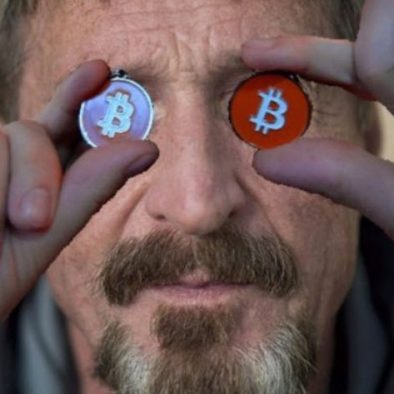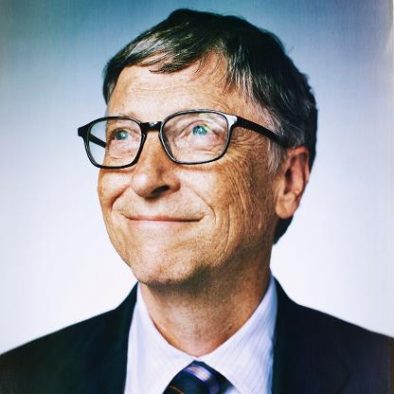Learn About Blockchain
The fastest way to learn how Blockchains work is to build one
What is Blockchain?
A blockchain, originally block chain, is a continuously growing list of records, called blocks, which are linked and secured using cryptography. Each block typically contains a hash pointer as a link to a previous block, a timestamp and transaction data. By design, blockchains are inherently resistant to modification of the data. It is “an open, distributed ledger that can record transactions between two parties efficiently and in a verifiable and permanent way”. For use as a distributed ledger, a blockchain is typically managed by a peer-to-peer network collectively adhering to a protocol for validating new blocks. Once recorded, the data in any given block cannot be altered retroactively without the alteration of all subsequent blocks, which requires collusion of the network majority.
https://youtu.be/0vSga0zZW8g
Don Tapscott explains why blockchain, the technology underpinning the cryptocurrency, have the potential to revolutionize the world economy.
Advantages of Blockchain
Transparency
One of the prime reasons blockchain is intriguing to businesses is that this technology is almost always open source. After all, if there are countless eyes on the network, someone is probably going to see that logged data has been altered. This makes blockchain a particularly secure technology.
Reduced Transaction Cost
Blockchain allows peer-to-peer and business-to-business transactions to be completed without the need for a third party, which is often a bank. Since there’s no middleman involvement tied to blockchain transactions, it means they can actually reduce costs to the user or businesses over time.
Faster Transaction Settlement
It’s not uncommon for bank transactions to take days to completely settle. This is due to protocols in bank transferring software, as well as the fact that financial institutions are only open during normal business hours. Comparatively, blockchain technology is working 24/7, meaning blockchain-based transactions process considerably more quickly.
Decentralization
Another central reason blockchain is so exciting is its lack of a central data hub. Instead of running a massive data center and verifying transactions through that hub, blockchain actually allows individual transactions to have their own proof of validity and the authorization to enforce those constraints.
“What the internet did for communications, blockchain will do for trusted transactions.”

Ginni Rometty
CEO, IBM
“You can’t stop things like Bitcoin. It will be everywhere and the world will have to readjust.”

John McAfee
Founder of McAfee
“Bitcoin is exciting because it shows how cheap it can be. Bitcoin is better than currency..”

Bill Gates
Co-founder of Microsoft
Frequently Asked Questions
Learn about blockchain and its endless possibilites
What is Blockchain Technology?
Blockchain is the core technology behind bitcoin. At its heart is a distributed data store. Anyone who participates in this network has their own data store that stores all of the transactions that ever happened on the network (this is also known as the distributed ledger).
Entries are stored within a cryptographic chain of blocks. At every stage, the network of participants must agree about the latest block of transactions. Agreement is reached through a process of majority consensus, eliminating duplicate entries, double spending etc. This process and the cryptographic layering of the blocks makes the agreed blockchain irreversible and immutable. The ‘history’ of events within this technology cannot be modified by any one of the participants without majority consensus from the group.
What Is A Private Blockchain?
Private blockchains are deployed either within an organization or shared among a known group of participants. They can be limited to a predefined set of participants. In this case, no one else can access them or the data residing in them. They can be secured in a similar way to securing other integrated enterprise applications (e.g. firewalls, VPN etc).
What Is A Smart Contract?
A Smart Contract is code that is deployed to the blockchain. Each smart contract contains code that can have a predefined set of inputs. Smart contracts can also store data. Following the distributed model of the blockchain, smart contracts run on every node in this technology, and each contract’s data is stored in every node. This data can be queried at any time. Smart Contracts can also call other smart contracts, enforce permissions, run workflow logic, perform calculations etc. Smart contract code is executed within a transaction – so the data stored as a result of running the smart contract (i.e. the state) is part of the blockchain’s immutable ledger.
What Is Mining?
Mining is used a proof of work for participants in the blockchain. Whenever a block of transactions is to be agreed, every participating node attempts to ‘mine’ the block (a mathematical algorithmic process that requires extensive CPU capacity). In public blockchains successful mining is rewarded with a cryptocurrency token.
Want to help us innovate?
Connect with us to learn how you can make a difference